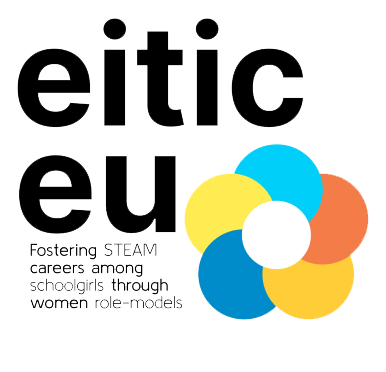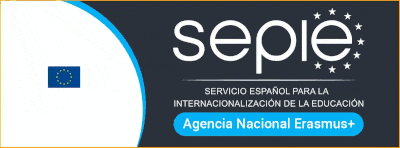
When the Web Reflects (and Amplifies) Inequality
07/16/2025 b vasileiadis
School of Robotics
In an increasingly connected world, where our lives intersect daily with algorithms, social media, and artificial intelligence, gender bias not only survives—it often finds new ways to emerge. Although the web was born with the promise of being a democratic space open to everyone, it often ends up replicating—and even amplifying—the inequalities of the offline world (A Roadmap for Women’s Rights, European Commission Report, 2025)
Gender Bias
Gender bias refers to cognitive or cultural distortions that lead to associating certain qualities, roles, or behaviours with a person based on their gender (Guilbeaul, et al, 2024). These biases can be explicit (intentional) or implicit (automatic and often unconscious), and are the result of centuries of social constructions and stereotypes.
In the digital context, these biases don’t disappear; in fact, they intertwine with technologies that, if not carefully designed, end up perpetuating them. Moreover, with the introduction of AI chatbots like ChatGPT for generating natural language texts, the vast amount of data these bots draw from can transfer centuries of accumulated prejudice into AI-generated responses (Zinnya del Villar. 2025).
Indeed, algorithms—the instructions that govern search engines, social networks, and e-commerce platforms—are trained on massive datasets that reflect societal judgments about women, historical biases, and various events and cases.
Some Examples
Automatic translators often associate job roles with gender: phrases like “the doctor” are translated in many languages with a male word, while “the nurse” becomes female, even when no gender is specified (van Es et al, 2021).
Search engines tend to offer different responses based on the presumed gender of the user, reinforcing stereotypical roles. Online ads often show high-paying jobs to male users, and beauty or caregiving courses to female users, based on past behaviour or implicit gender profiling.
Social networks, besides being tools for communication, are also spaces where gender bias becomes glaringly evident. Sexist comments, body shaming, and attacks on LGBTQIA+ or gender non-conforming individuals are common occurrences. Women who speak about politics, technology, or sports regularly receive derogatory messages or threats—a phenomenon known as gendered hate speech.
Bias effects on Girls and young Women (and their Families)
Online gender bias is not just a problem of representation—it has real-world consequences. The impact of these prejudice-filled, aggressive interactions discourages women from pursuing studies or careers in male-dominated fields, contributing to a toxic and non-inclusive digital culture.
Furthermore, these harmful dynamics have consequences in real life and can influence job opportunities, as algorithms used in hiring processes can be discriminatory.
Despite undeniable progress, strong prejudices about women’s abilities in STEM fields persist, discouraging girls from taking an interest in or pursuing scientific and technological studies.
Exposure to unrealistic professional standards presented as unattainable for girls undermines their psychological confidence.
Schools, associations, NGOs, and civil society organizations have made significant progress in fighting gender stereotypes. However, these are still perpetuated online through the heavy use of stereotypical imagery in advertising and entertainment programs. Unfortunately, in many cases, these biases are “effective” in the world of advertising.
How to Combat Gender Bias Online
As we’ve seen, gender bias is not an isolated phenomenon of the digital world – it reflects a society still struggling to fully embrace equality. But the web, precisely because it is so pervasive, can also be a powerful tool for change.
As users, developers, educators, and digital citizens, we can choose to contribute to a fairer, more inclusive, and respectful internet (Council of the European Union, 2025)
Tackling gender bias online requires a collective, multidimensional effort. Digital platforms must take responsibility for designing ethical, transparent algorithms that are sensitive to diversity.
It is not enough to ignore bias—we must name it, recognize it, and dismantle it. Only then can we truly transform the web into a space that belongs to everyone—and is for everyone.
References
European Commission Report (2025). A Roadmap for Women’s Rights. https://commission.europa.eu/document/download/0c3fe55d-9e4f-4377-9d14-93d03398b434_en?filename=Gender%20Equality%20Report%20Chapeau%20Communication.pdf last access July 2025
Guilbeault, D., Delecourt, S., Hull, T. et al. “Online images amplify gender bias”. Nature 626, 1049–1055 (2024). https://doi.org/10.1038/s41586-024-07068-x
https://www.nature.com/articles/s41586-024-07068-x#citeas (Last access July 2025)
del Villar. Z. (2025). How AI reinforces gender bias—and what we can do about it. https://www.unwomen.org/en/news-stories/interview/2025/02/how-ai-reinforces-gender-bias-and-what-we-can-do-about-it. (Last access July 2025).
van Es, K., Everts, D. ., & Muis, I. (2021). “Gendered language and employment Web sites: How search algorithms can cause allocative harm”. First Monday, 26(8). https://doi.org/10.5210/fm.v26i8.11717. https://firstmonday.org/ojs/index.php/fm/article/view/11717 (Last access July 2025)
Council of the European Union 2025). Advancing Gender Equality in the AI-Driven Digital
Age: 6th horizontal review of the implementation of the Beijing Platform for
Action by the Member States and the EU institutions. https://data.consilium.europa.eu/doc/document/ST-9984-2025-INIT/en/pdf.
(Last access July 2025).










 eitic@cibervoluntarios.org
eitic@cibervoluntarios.org